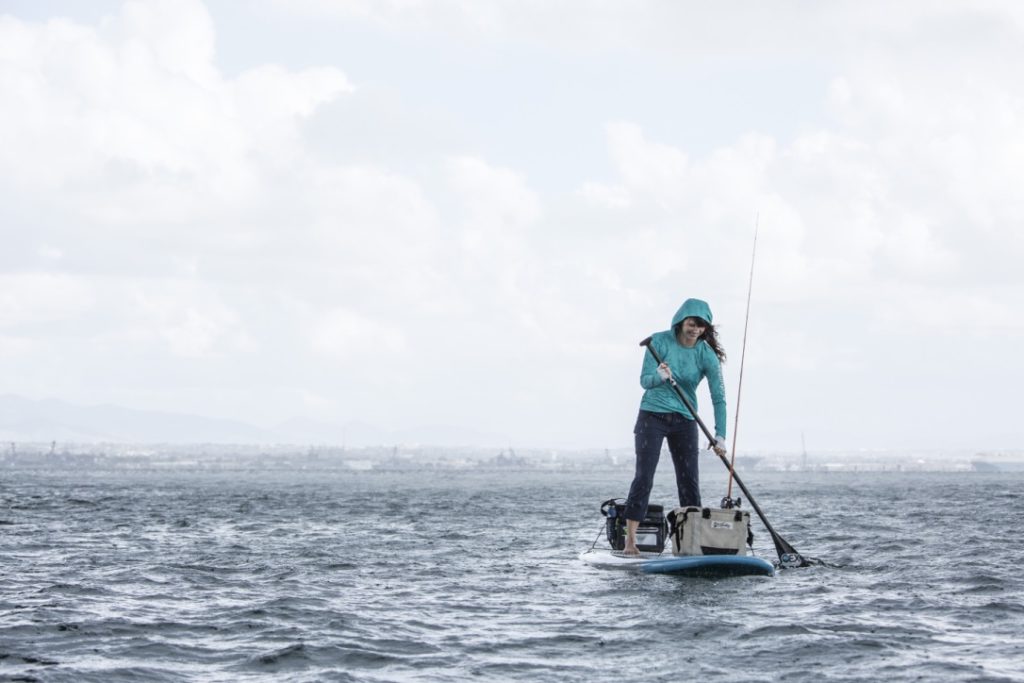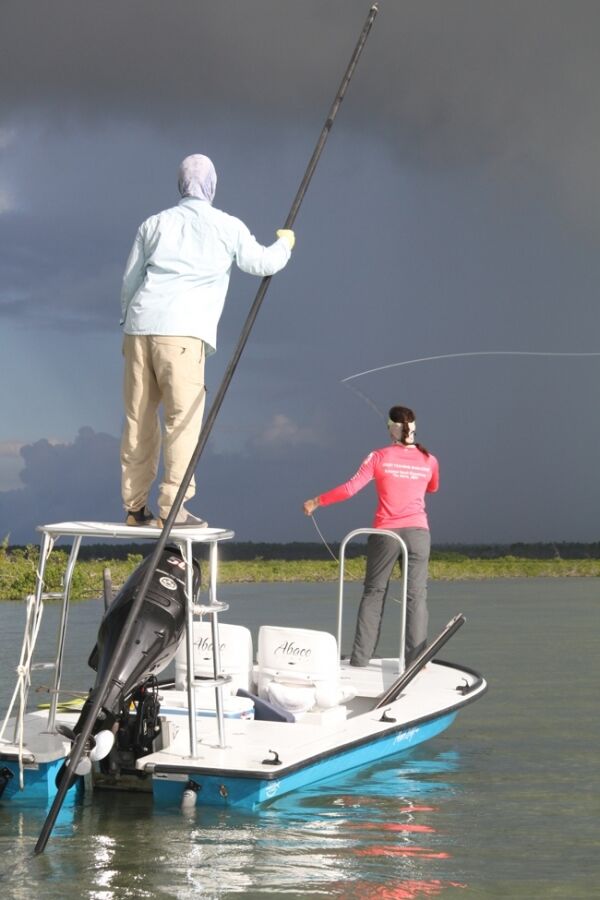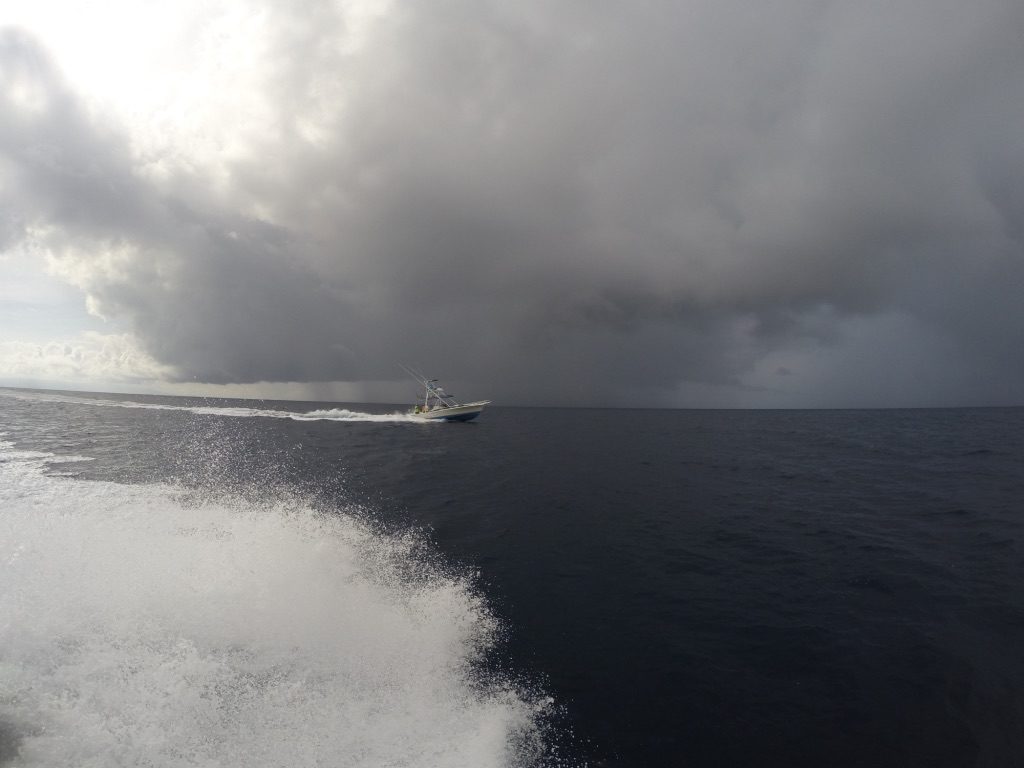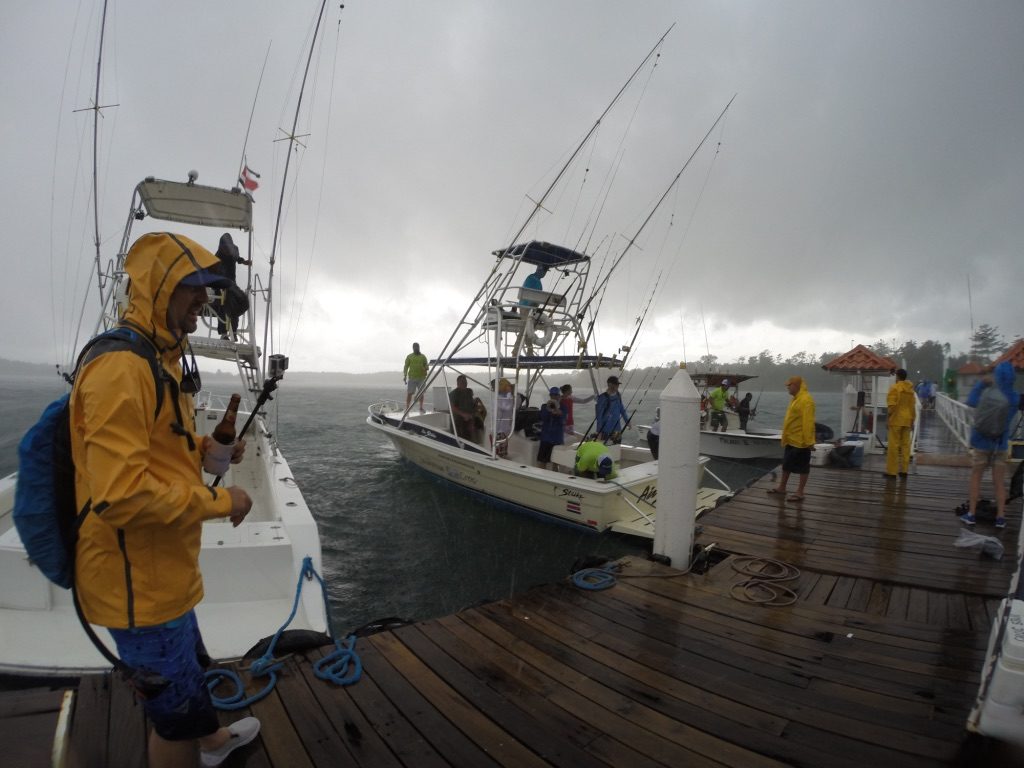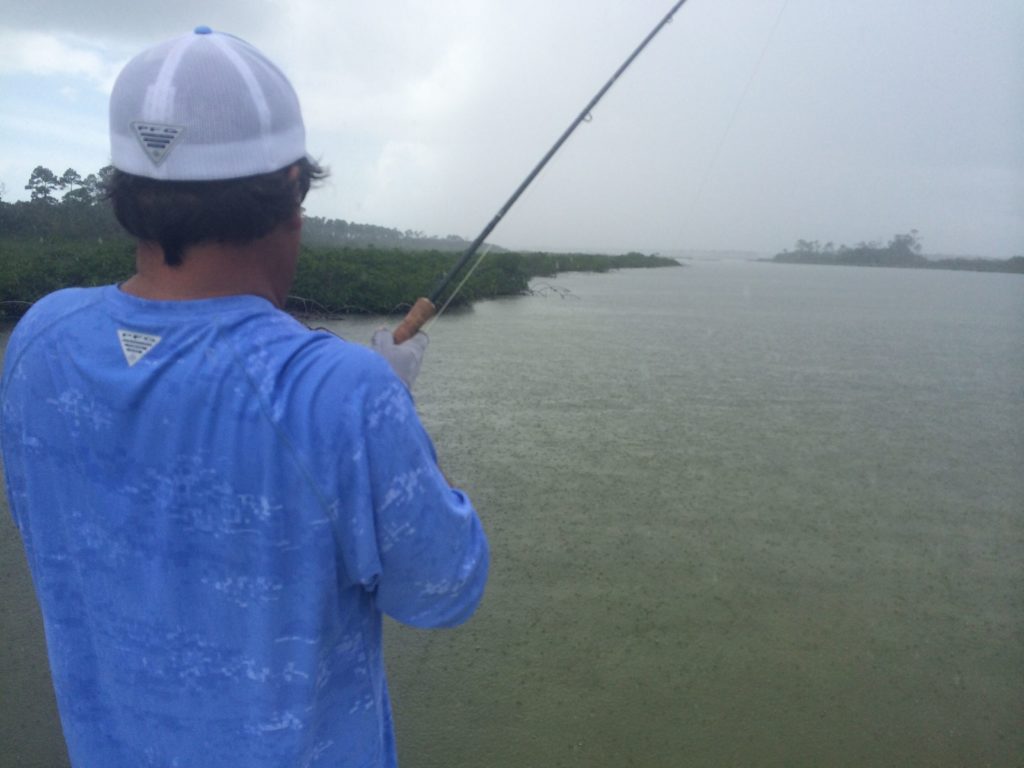The summer heat is rising, the fish are biting and there is nowhere better to be than on the water. On the horizon, however, dark clouds form, the sky gets black and the inevitable summer storm heads your way. Do you pack it in, or do you grin and bear it while making another cast? While rain can often dampen our clothes and spirits while on the water, it doesn’t always mean it’s time to go home*. In fact, sometimes it may lead to the best fishing day you’ve seen in years.
Below are some of our best tactics for fishing when the rains begin to fall.
*Note: no storm is worth fishing in when there’s lightning. That six to nine foot lightning rod you’re casting should be all the reason you need to pack it up and head home!
The Action Before the Storm
When you see that storm-cloud moving in from the horizon, if there’s no lightning, don’t be too hasty in leaving. The drop in pressure with the oncoming storm, combined with the ensuing overcast can give fresh water fish, like bass and trout, a sense of comfort from sky-bound predators. This sense of comfort will bring more fish out and may even start a feeding frenzy.
The overcast will create the appearance of evening light, and should have you thinking surface tactics.
Bass and pike anglers should be tying on poppers, or spinners during this time of low light and falling pressure. Both species of fish will be more active and willing to chase. Trout anglers should be taking advantage of the low light hatches by throwing out an array of dry flies.
Before You Go
Make sure to check your FishAngler app’s weather forecast to time the storm just right. The forecast will break down your weather by the hour. This will give you a good idea when to take advantage of those pre-storm conditions. Also, be sure to pack a brimmed hat or rain jacket. You may be surprised by the post-storm windchill if you’ve been soaked to the bone.
When It Rains…
When the heavens finally do open up you will still have a few options regarding your tactics, depending on how hard the rain is falling and how cold it is. So throw on a rain jacket and enjoy nature’s shower.
Bass are going to disperse once the light rains begin falling. The surface of the water will be broken up and they will no longer congregate under docks and other cover. Instead, they’ll move about across the water. This is the time to cover as much water as possible. Pay less attention to the traditional hiding spots. If your lake or pond has a stream running into it, try focusing on these areas as the rain may make smaller stream levels rise. Insects and other nutrients may flush out which will in turn attract bait fish. Which will, you guessed it! Attract bass.
For trout anglers, a light rain could be the signal to throw on a foam-bodied terrestrial pattern. As light rain falls, many ants, grasshoppers and other insects will get knocked off leaves and grass blades. Into the water they go, creating a buffet moving downstream. If you’re having trouble watching a dry fly amidst all the raindrops, there’s nothing wrong with throwing on a San Juan worm either. The eroding soil will be sending plenty of them into the drink, as well.
Before you go:
Check your solunar calendar on your app before you go to accurately time the height of fish activity, before and during an incoming storm.
…It Pours
When the heavy stuff really starts coming down, it’s important to keep an eye on water temperature. If the temperature starts dropping, it could signal a slowdown in fish movement. Thus, time to stop the aggressive spinners and try a more subtle approach. As the clouds get dark, however, the rule of thumb is to use a matching dark colored lure.
Start targeting the foot of the lake (or the runoff area) as this will be the last bit to be clouded up by moving debris from incoming streams at the head of the lake. When the water does get cloudy, drop the finesse and get loud. There’s very little point in finesse when the fish can’t even see it. Now it’s time for crank baits and buzzbaits to get the word out. If the fish can’t see you at least they will hear you.
Before you go: Check the map of your lake, or pond and make sure you know where all the head and foot of the lake is, as well as all inlets and other areas that may afford you shelter from the deluge.
The trout angler on a stream of river is probably going to give up on topwater action once the rain begins thundering down. The heavy rain will prevent your fly from sitting on the surface and disrupt your ability to see a take. The heavy rain will also disrupt the surface to the point where a trout won’t see falling bugs either. Now it’s time for sub surface.
Target slow-moving eddies as fish may be moving into these pockets to avoid the increasing current of your stream, or river.
If your constitution is strong enough to wait out the storm, you may even be rewarded by a massive fly hatch, which should keep you busy for the rest of the day!
Our days fishing are limited and precious. Don’t let a rain storm chase you away from your passion. The next time you feel the temperature drop, see the clouds roll in and the wind whip we urge you to pull on a jacket, take another cast and embrace the opportunities provided by a brisk summer storm.
Download the FishAngler app for FREE!
